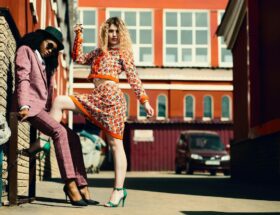Prom is a popular event typically hosted at the end of the school year as a formal celebration for graduation. It is held by majority of high schools in the United States but lately been gaining popularity across Canada, Australia, and Europe.
Like many formal events, prom has an interesting and somewhat expansive history. Let's dive in and see what the word ‘prom’ stands for and what the history of prom look like.
The History of Prom
While there are traces of celebratory events for younger people and those reaching the next phases of their lives as far back as ancient Greece, the traceable history of prom as we know it today starts around the 18th and 19th centuries with debutante balls.
These balls were held for young people in a formal, co-ed setting, and they were typically used to find matches for courtship and marriage, in addition to announcing the debut of young women into the suitable age for marriage. Debutante balls were typically a high-society tradition but has become more casual recent years.
Prom started to become popular around the 20th century as many young women and men wished to be included in a celebratory event yet could not afford the extravagance of the debutante ball.
Proms were formally introduced into high schools in the 1920s, with the goal of introducing women and men to the cultural norms of society as they were in this period – such as women being subservient to men, and the proms being segregated affairs.
Over time, and with the change in societal norms to be more inclusive, proms started gaining popularity as a high school dance that celebrated the transition of teenagers.
Around the 1950s, companies started marketing their products directly for teenagers attending proms, and proms started to become commonplace in high schools and anticipated by many as an end-of-year event.
In today’s world, proms are a way for juniors and seniors in high school to celebrate their transition into the next period of their lives, and to say goodbye to their friends. Today’s proms are also more inclusive, with LGBTQ+ students and students of color gaining the representation they deserve.
Additionally, prom proposals (known as ‘promposals’), elaborate ways that students ask each other to prom, have become increasingly popular and loved by high school students across the United States.
What Is Prom Short For?
Prom is short for ‘promenade,’ which refers to the parade of students or young women that used to occur during the debutante balls.
What Do I Wear to Prom?
Prom is typically a formal or semi-formal event, which means there will be a certain dress code that you need to follow. Your school will let you know about your prom’s specific dress code before your prom’s date.
In general, girls will wear floor-length gowns in different colors and styles, though you can also wear pantsuits and jumpsuits. You can find prom dresses and other appropriate outfits from prom-focused designers like Sherri Hill, at department stores, or boutiques. Boys, on the other hand, typically wear suits and ties, or a tuxedo.
How Do I Learn More About Prom?
Every prom is different, and if you are curious about specific timing information about your prom or which students are allowed to attend, you will need to check with your school directly. Some schools allow all high school students to attend, while others only allow junior and senior or senior high school students to attend.
In most high schools, there will be a prom committee elected by your class that handles all of the prom organization details, including theme, venue, and ticketing, If you wish to be involved in the prom organization process, you can speak to a teacher or school administrator about getting involved in your school’s prom event.
Making the Most of Prom Night
Today’s proms are very different from the historical dances they originated from. Throughout the United States, proms celebrate students and their transition to a new period in their lives, and proms are more inclusive than ever.
Prom night can be unforgettable. To make the most of prom night, start by choosing and altering your outfit early and booking hair and makeup appointments in advance. Take lots of photos!



